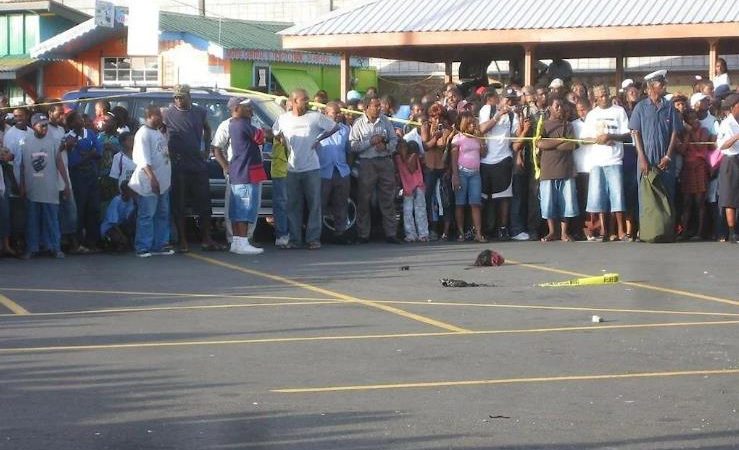Smallest country in the world have big stories

Smallest country in the world
The world’s biggest countries get the most attention, to be sure, whether it’s the presidential election in the United States, trade with China, politics in Russia, or the fate of the Amazon rainforest in Brazil.
But the countries with the smallest populations have big stories of their own.
Sierra Leone
- Populace: 6,624,933 (+2.4% normal populace development)
- Net relocation rate per 1,000 individuals: – 1.2%
- Metropolitan populace: 42.9% of absolute populace (+3.1% yearly pace of progress)
- Rate of birth per 1,000 individuals: 35.4 (middle future upon entering the world: 59.8 years)
- Demise rate per 1,000 individuals: 9.8
- Middle age: 19.1
The populace in Sierra Leone has been developing at a significant speed. The rate of birth is high, and ladies on normal have multiple kids. With a middle period of only 19, the populace is very youthful. Projections show the development rate in the West African country, which in ongoing many years has experienced unpleasant common conflict, allegations of basic freedoms infringement, and an Ebola plague, dropping half by 2050.
El Salvador
- Populace: 6,481,102 (+0.8% normal populace development)
- Net relocation rate per 1,000 individuals: – 4.8%
- Metropolitan populace: 73.4% of all out populace (+1.6% yearly pace of progress)
- Rate of birth per 1,000 individuals: 18.6 (middle future upon entering the world: 74.8 years)
- Passing rate per 1,000 individuals: 5.9
- Middle age: 27.7
The pace of populace development in El Salvador has been easing back in enormous part because of the many individuals who escape its posse driven brutality. An expected 454,000 individuals were uprooted last year, generally because of dangers, coercion and killings by groups of thugs. Development in the populace is projected to end by 2050 because of the continuous mass migration.
Singapore
- Populace: 6,209,660 (+1.7% normal populace development)
- Net relocation rate per 1,000 individuals: +11.8%
- Metropolitan populace: 100% of absolute populace (+1.4% yearly pace of progress)
- Rate of birth per 1,000 individuals: 8.9 (middle future upon entering the world: 86 years)
- Demise rate per 1,000 individuals: 3.6
- Middle age: 35.6
Development in Singapore’s populace has been driven by migration of unfamiliar smallest country in the world workers expected to work in its businesses. The public authority has been battling to expand the richness rate, one of the least on the planet, with little achievement.
Nicaragua
- Populace: 6,203,441 (+1% normal populace development)
- Net movement rate per 1,000 individuals: – 2.4%
- Metropolitan populace: 59% of complete populace (+1.5% yearly pace of progress)
- Rate of birth per 1,000 individuals: 17.1 (middle future upon entering the world: 74.2 years)
- Demise rate per 1,000 individuals: 5.2
- Middle age: 27.3
In Nicaragua, the populace has been developing yet at an easing back rate with less births. The development is viewed as reasonable for the nation’s economy, however the declining rate is viewed as a welcome improvement in endeavors to address the nation’s destitution. It is one of the Western half of the globe’s least fortunate countries.
Eritrea
- Populace: 6,081,196 (+0.9% normal populace development)
- Net movement rate per 1,000 individuals: – 11.6%
- Metropolitan populace: 41.3% of absolute populace (+3.9% yearly pace of progress)
- Rate of birth per 1,000 individuals: 27.9 (middle future upon entering the world: 66.2 years)
- Demise rate per 1,000 individuals: 6.9
- Middle age: 20.3
The populace is filling quickly in Eritrea, perhaps Africa’s most unfortunate nation since quite a while ago battered by extreme dry spell and struggle. Its introduction to the world rate is incredibly high, counterbalancing its high relocation of youngsters looking for work and escaping its endless public induction framework. Kid death rates have dropped significantly in Eritrea, and future has developed from only 39 years in 1960.
Focal African Republic
- Populace: 5,990,855 (+2.1% normal populace development)
- Net relocation rate per 1,000 individuals: 0%
- Metropolitan populace: 42.2% of absolute populace (+2.5% yearly pace of progress)
- Rate of birth per 1,000 individuals: 33.2 (middle future upon entering the world: 54.2 years)
- Passing rate per 1,000 individuals: 12.3
- Middle age: 20
The number of inhabitants in the Central African Republic has been developing, in spite of having one of the greatest maternal death rates on the planet and a high youngster death rate too. Some 70% of individuals in the nation live under the World’s smallest country in the world Bank’s worldwide neediness line of $1.90 every day.
Kyrgyzstan
- Populace: 5,964,897 (+1% normal populace development)
- Net movement rate per 1,000 individuals: – 5%
- Metropolitan populace: 36.9% of absolute populace (+2% yearly pace of progress)
- Rate of birth per 1,000 individuals: 20.6 (middle future upon entering the world: 71.8 years)
- Passing rate per 1,000 individuals: 6.3
- Middle age: 27.3
Kyrgyzstan’s populace has been developing the smallest country in the world consistently. Its better than expected rate of birth is offset sizable displacement. The nation has been politically unsteady since its freedom in 1991, and its economy depends upon travel creation at a solitary gold mine and upon settlements sent home by laborers abroad.
Denmark
- Populace: 5,869,410 (+0.5% normal populace development)
- Net movement rate per 1,000 individuals: +2.8%
- Metropolitan populace: 88.1% of absolute populace (+0.5% yearly pace of progress)
- Rate of birth per 1,000 individuals: 11.1 (middle future upon entering the world: 81.2 years)
- Demise rate per 1,000 individuals: 9.5
- Middle age: 42
Denmark’s populace development has been without rushing. The speed is projected to diminish throughout the following thirty years in the realm, which has better expectations of living than a lot of Europe.
Finland
- Populace: 5,571,665 (+0.3% normal populace development)
- Net relocation rate per 1,000 individuals: +2.6%
- Metropolitan populace: 85.5% of all out populace (+0.4% yearly pace of progress)
- Rate of birth per 1,000 individuals: 10.6 (middle future upon entering the world: 81.3 years)
- Demise rate per 1,000 individuals: 10.3
- Middle age: 42.8
In Finland, populace development has been consistent. The rate is probably going to slow significantly before very long, as the rate of birth decreases, especially in country regions, which the public authority sees as cause for financial concern.





